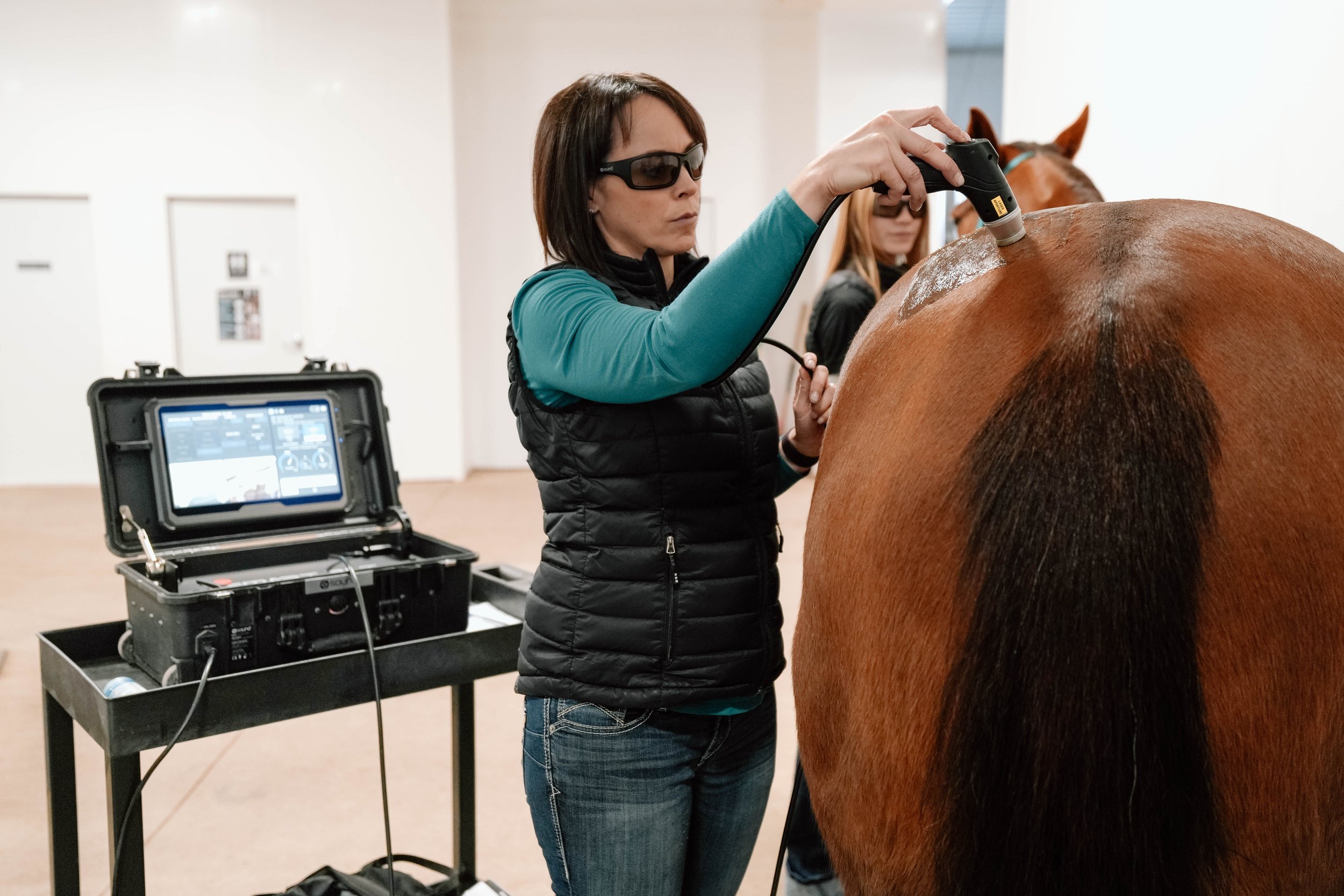Equine Therapy Success Stories: Actual Individuals, Genuine Emotional Changes
Wiki Article
How Laser Therapy in Horse Therapy Is Transforming Veterinary Take Care Of Equines
Laser treatment has actually arised as a transformative strategy in equine veterinary care, offering a non-invasive option that accelerates healing and improves overall wellness. The portability and versatility of laser treatment tools better emphasize their expanding indispensability amongst vets.
Understanding Laser Therapy
Recognizing laser treatment is essential for valuing its function in equine treatment. Laser treatment, additionally referred to as photobiomodulation, involves the application of specific wavelengths of light to cells, which can result in various organic results. This healing technique harnesses the power of light power to permeate the skin and underlying cells, promoting mobile processes and boosting cells repair.The modern technology behind laser therapy is based in the principle of photochemistry, where photons are taken in by chromophores within cells, resulting in raised ATP production and inflection of reactive oxygen varieties. This, consequently, advertises cellular spreading, decreases swelling, and speeds up healing. Vet professionals use various kinds of lasers, consisting of low-level lasers (LLLT) and high-power Class IV lasers, depending upon the specific restorative goals and the nature of the equine problem being treated.
Various laser wavelengths and power settings are very carefully picked to target various tissue midsts and attain preferred professional outcomes. Security methods are vital, as inappropriate usage can lead to thermal damage or suboptimal healing effects. Hence, an extensive understanding of laser treatment's devices and applications is important for its reliable implementation in equine veterinary practice.
Advantages for Horse Wellness
The myriad benefits of laser therapy for equine health and wellness incorporate boosted recovery, pain reduction, and enhanced flexibility. This innovative treatment modality leverages specific wavelengths of light to permeate cells, boosting mobile feature and advertising quick cells repair work. The non-invasive nature of laser therapy guarantees marginal stress and discomfort for the equine, helping with a smoother recuperation process.By reducing swelling and pain, and improving cells repair work, laser treatment aids in bring back joint feature and muscle versatility. Thus, laser treatment stands as a transformative tool in contemporary horse vet care.
Common Conditions Dealt With
Laser treatment has emerged as a flexible therapy option for a range of common equine conditions. Additionally, laser therapy is efficient for conditions like osteo arthritis, where it assists alleviate joint swelling and promote cells repair work.Wound monitoring is an additional location where laser therapy has actually shown considerable guarantee. Chronic injuries or slow-healing abscess can be especially challenging in horses, however laser treatment improves mobile regrowth and improves blood flow, therefore quickening the healing process. Moreover, laser therapies have been efficiently used in taking care of hoof problems such as laminitis and abscesses, minimizing discomfort and advertising quicker healing.
Horse professional athletes commonly deal with performance-related concerns like muscle mass discomfort and stress cracks. Laser therapy aids in reducing muscular tissue tiredness and expedites the recovery of micro-injuries, hence ensuring that horses go back to peak performance quicker. By resolving these varied problems, laser therapy is changing the landscape of veterinary care, offering a non-invasive, efficient alternative to typical treatments.
Technology Behind Laser Treatment

Laser tools made use of in vet medication usually make use of low-level laser treatment (LLLT) or cool laser therapy. Unlike high-powered surgical lasers, these devices operate at reduced energy levels, enhancing healing advantages while reducing thermal damage. The energy from the laser light boosts adenosine triphosphate (ATP) production, improves mobile metabolic rate, and accelerates tissue repair work procedures.
Modern laser therapy equipment for equine therapy is made with adjustable settings to provide to the certain requirements of different cells and conditions. Furthermore, innovations in laser modern technology have led to the advancement of mobile, portable tools, making it less complicated for veterinarians to offer therapy in a variety of settings, More about the author from centers to stables.
Success Stories and Instance Researches
Showcasing the tangible advantages of laser treatment, countless success stories and study illuminate its transformative influence on equine wellness. One such case includes a pure-blooded racehorse suffering from chronic tendonitis. Typical therapies generated marginal enhancement, but after integrating laser treatment right into the program, the horse showed considerable reductions in inflammation and discomfort within weeks, ultimately going back to affordable racing.One more engaging example includes a dressage equine identified with extreme neck and back pain, limiting its efficiency. A vet group used low-level laser treatment (LLLT) to target the inflamed locations, causing significant enhancement in adaptability and a noteworthy decline in pain. Over a number of sessions, the horse reclaimed its peak type, showcasing the efficacy of laser therapy in dealing with musculoskeletal issues.
In addition, a study conducted at a leading equine clinic analyzed 50 steeds with different soft tissue injuries treated with laser browse this site treatment. The results stood out: 85% of the horses demonstrated sped up healing times and improved Check Out Your URL wheelchair. These instances highlight the versatility and performance of laser therapy in equine medication, offering a non-invasive, scientifically-backed technique to improving recuperation and performance in equines.
Conclusion
Laser therapy is transforming equine veterinary treatment by supplying a non-invasive therapy that increases healing, lowers inflammation, and reduces pain. With its efficiency in treating a variety of problems, from musculoskeletal injuries to chronic disorders like osteoarthritis, this modern technology considerably improves equine wellness and flexibility. The portability and flexibility of laser therapy better highlight its transformative effect on vet techniques, solidifying its function as a vital tool in contemporary equine health care.Report this wiki page